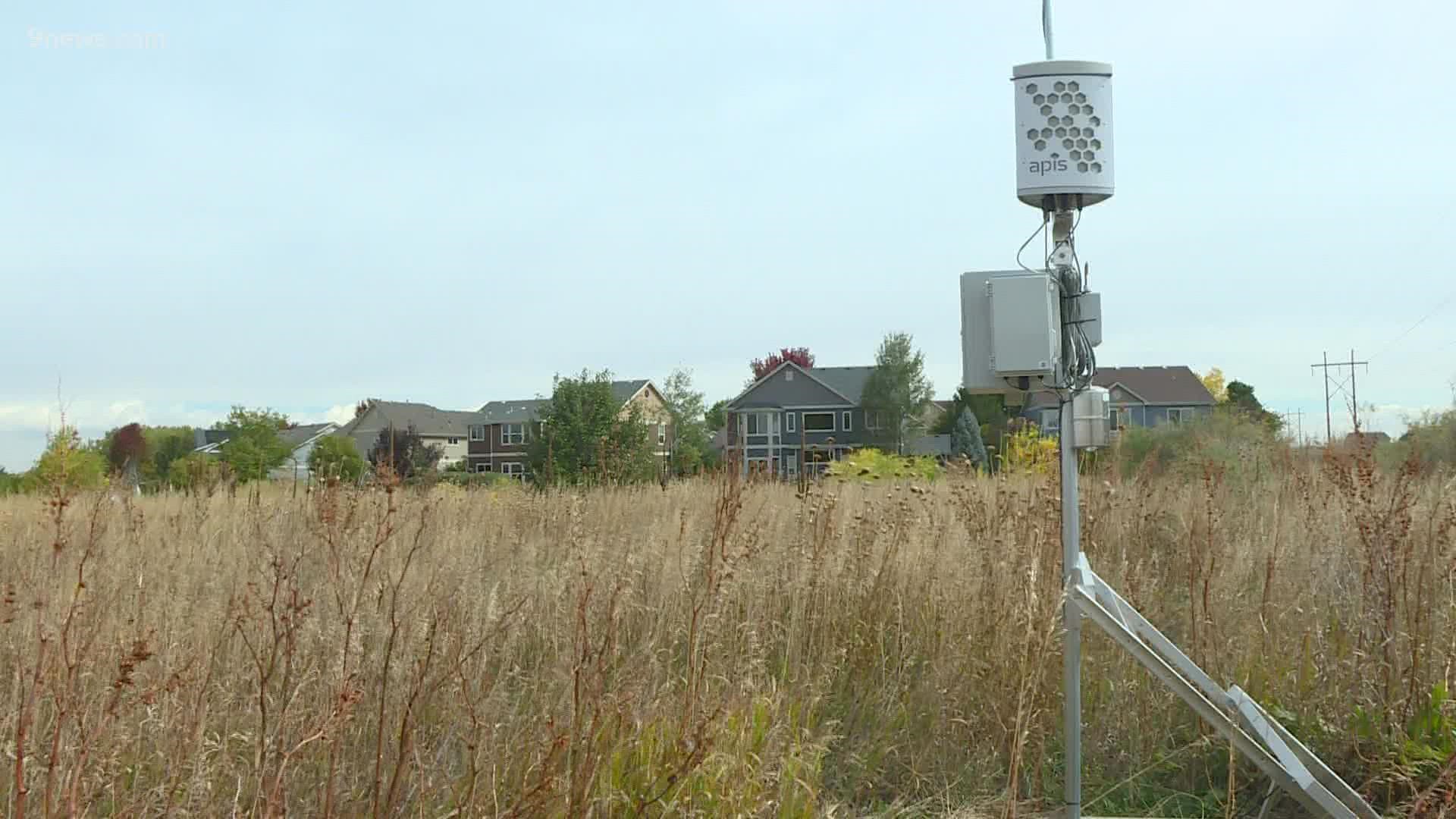ERIE, Colo. — In the town of Erie, the way the wind is blowing matters.
"Absolutely, it’s going to determine where the air is coming from," said David Frank, Energy and Environmental Program Specialist for the Town of Erie.
Homes sit with oil and gas pads just beyond their backyards. Now there’s something new in between them.
Ten air quality measuring stations were just installed around Erie, pumping out real-time information available publicly online about emissions coming from the oil and gas sites nearby, as well as from landfills.
"This is the first step of a brand-new era of air quality monitoring," Frank said. "Most of the times, these are gases that can’t be seen or smelled. There’s really no way to know they’re in the air if you’re not directly measuring them."
While there are strict rules regulating the emissions the sites produce, towns like Erie felt they didn’t have enough information to determine what amount of exposure to dangerous compounds like benzene is safe. These new monitors can catch small emissions that could previously be overlooked.
To track the data, Erie is working with researchers at Colorado State University, including Professor Jeff Collett, the head of the Department of Atmospheric Science. CSU has worked with other cities and towns, including Broomfield, to install and monitor similar systems.
"The study is really designed to understand what people might have been exposed to," Collett said. "When you’re really close to a source like an oil and gas pad, things are changing so quickly. Even if you look now, it might be different 10 minutes from now at that particular location."
Emissions can change very quickly based on wind speed and direction, and monitors that only measure air quality periodically can miss some pollution plumes. That's why this real-time monitoring is so important. They'll get more data over time, and that will help them understand if there are impacts from long-term exposures.
For people who live near the sites, the real-time monitoring can also be used to influence decisions on time spent outside, or when to do things like close windows.
"My hope is that it will inform future legislation to ensure the safety of residents that live next to these facilities and also to what degree they present a danger to human health and safety as far as air quality is concerned," Frank said. "The oil and gas has been here. The houses are now moving into those areas. How safe is safe? What levels are dangerous? Those are very difficult questions to answer. With any scientific problem, you have to start by collecting good data."
It's real-time information designed to help answer questions.
"You have oil and gas, you have development. How can they coexist the most safely?" Frank said. "What can we do to best ensure the health and safety of the residents of Erie and Colorado?"
SUGGESTED VIDEOS: Full Episodes of Next with Kyle Clark

